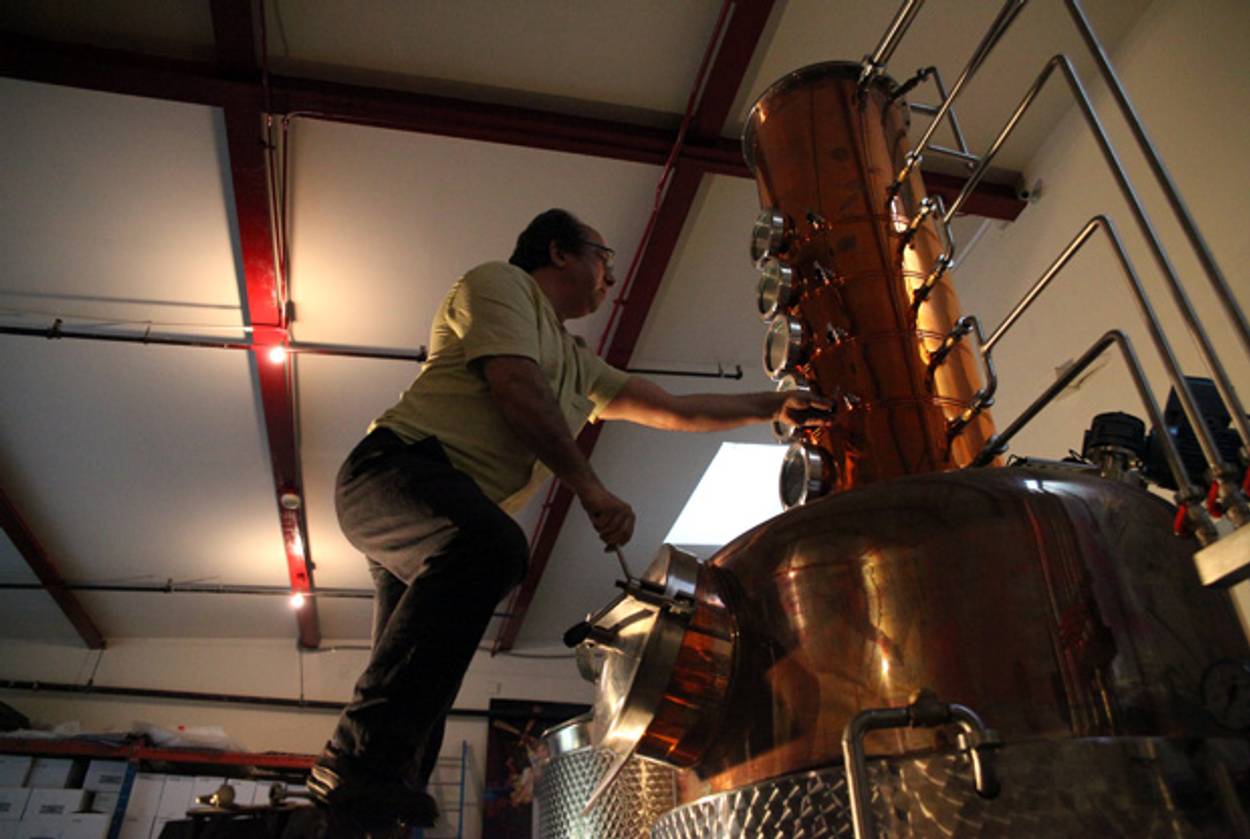Distilling the Taste of Morocco
David Nahmias keeps a family tradition alive by making mahia, a Moroccan fig brandy, in America




Using all of his upper-body strength, David Nahmias twisted the lid off of a 1,000-liter fermentation tank, releasing a deep, fruity smell into the air. His 10-year-old son Isaac stood on a ladder and peered inside at the viscous, bubbling contents: a deep red mash made from figs that had rested for two weeks without oxygen while the fruit’s sugar converted into alcohol. “It’s mushy, like Play-Doh,” said Isaac.
Nahmias, who with his wife Dorit co-founded Nahmias et Fils distillery just north of New York City, hooked up a pump to the plastic tank and began transporting the fig mash into a giant copper still that would filter the alcohol into a drinkable, 80-proof firewater called mahia. It’s a process that Nahmias has known by heart for practically his entire life. “[When] I was 6, 7 years old, I was watching my parents distilling,” he said over the hum of the still.
Born in a small town called Taznakht in the south of Morocco, Nahmias grew up in a family of Moroccan moonshine producers. Mahia—which means “water of life”—is essentially a fig brandy, flavored with a small amount of anise. For hundreds of years, Morocco’s mahia trade was dominated by Jews, who sold to everyone, from their rabbis to their Muslim neighbors. (At its peak in the mid-20th century, the Moroccan Jewish community numbered over 250,000; there are now approximately 2,500 Jews left, mostly in Casablanca.)
Nahmias’ mother taught him her mahia recipe, which he mimics as best he can. “It’s hard because she had no measurements,” he said. For years, he made home-brewed mahia while working as a computer software developer. But after his parents passed away two years ago, Nahmias, now 50, decided to make a career change and opened a small-batch distillery. He went to the American Distilling Institute in Kentucky to refine his skills, and bottles of mahia produced by Nahmias et Fils began appearing in New York liquor stores this summer. “I had this feeling of keeping alive something of my parents,” he said.
Upon entering the distillery, visitors will see a wall of framed family photos and memorabilia from Morocco. One central photograph is not of a relative, however—it’s a prized possession of David’s father, an image of the former Moroccan king Mohammed V. Joseph Nahmias was fiercely patriotic and participated in the Moroccan struggle for independence against French rule. While housing French soldiers in his hotel in Taznakht, he secretly transported Moroccan dissidents. After he was captured by the French authorities and jailed for three months, Joseph swore he would never leave Morocco. Even when all the other Jewish families in Taznakht left, mostly for Israel, he stayed firm. It was only at the end of Joseph’s life, when he was quite ill, that David convinced his father to live with him in the United States.
Now that Nahmias’ family is dispersed around the globe, mahia is his way of preserving his family’s legacy and link to Morocco.
“It’s a lot of history, a lot of culture,” Nahmias said, with a drink in his hand. “It’s part of my family—it’s part of me.”
***
Like this article? Sign up for our Daily Digest to get Tablet Magazine’s new content in your inbox each morning.
Sarah Kate Kramer is a radio producer and photographer based in New York City.
Sarah Kate Kramer is a radio producer and photographer based in New York City.